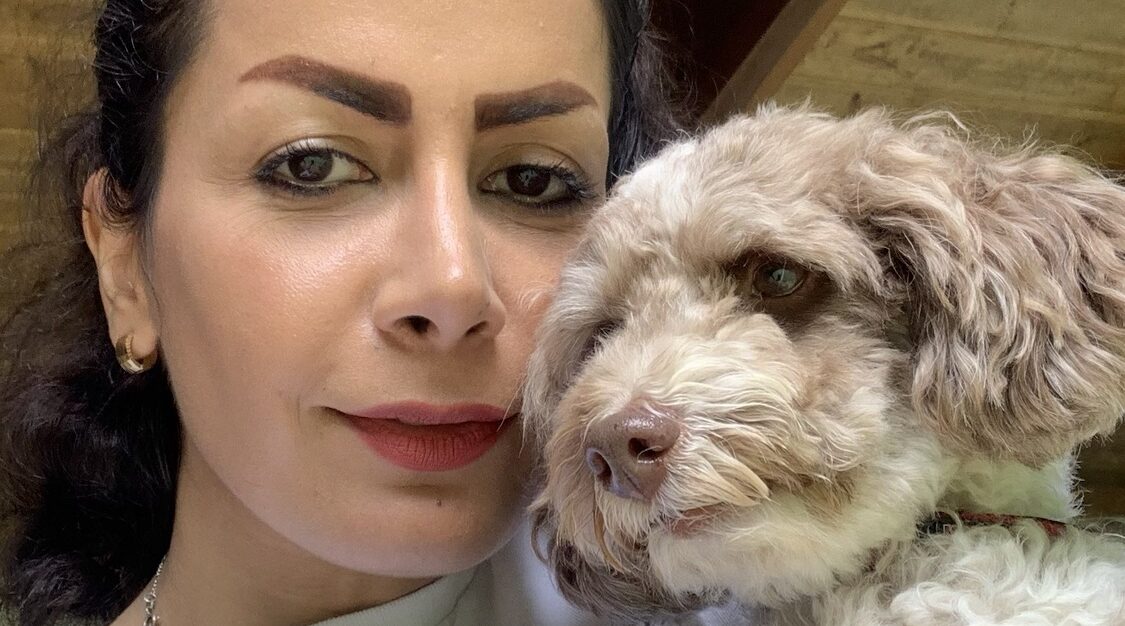Unraveling Canine Communication: Understanding Your Dog’s Signals
Have you ever wondered what your furry friend is trying to tell you with those adorable woofs and wags? Well, fret not, because decoding canine communication is like unlocking a secret language filled with tail wags, ear twitches, and even the occasional bark opera. Let’s dive into the fascinating world of understanding your dog’s signals!
Reading the Body Language
When it comes to communicating, dogs are masters of non-verbal cues. From the tip of their nose to the wag of their tail, every part of your pup’s body has something to say. For instance, a relaxed posture with a gently wagging tail signals contentment and happiness, while a stiff body with raised fur might indicate fear or aggression. Paying attention to these subtle signals can help you better understand your dog’s emotions and respond accordingly.
Deciphering Barks and Growls
Ah, the universal language of barks and growls! While it may seem like your dog is just making noise, each bark and growl actually has its own unique meaning. A short, sharp bark could be your pup’s way of saying “hello” or alerting you to something interesting, while a low, rumbling growl might signal discomfort or warning. By paying attention to the pitch, duration, and context of your dog’s vocalizations, you can start to decipher what they’re trying to communicate.
The Power of Eye Contact
They say that eyes are the windows to the soul, and the same holds true for our canine companions. Eye contact plays a crucial role in dog communication, conveying everything from affection and trust to dominance and submission. When your dog looks you directly in the eyes with a soft, relaxed gaze, it’s their way of saying “I love you” and seeking connection. On the other hand, prolonged staring with a hard, intense gaze can be seen as a challenge or threat in the canine world. Understanding the nuances of eye contact can help you strengthen your bond with your furry friend and avoid potential misunderstandings.
Playful Solutions: Incorporating Games into Obedience Training
Alright, fellow dog enthusiasts, let’s talk about turning obedience training into a game-filled adventure for both you and your furry sidekick! Who said learning can’t be fun? Get ready to fetch some valuable insights on how to transform the training routine into a playtime bonanza.
The Joy of Learning Through Play
First things first – let’s ditch the notion that obedience training has to be all serious and stern. Dogs are natural-born players, and guess what? You can tap into their love for games to teach them some manners. It’s a win-win situation – your dog gets to have a blast, and you get a well-behaved companion. It’s like tricking them into good behavior with a game of wits!
Hide and Seek with Commands
Turn your living room into a canine hide-and-seek arena! Start by commanding your pup to sit, stay, or lie down. Once they’ve mastered these basics, add a twist. Hide behind furniture or around corners, then call your dog. Not only does this reinforce obedience commands, but it also turns training into an exciting game of hide-and-seek. Your pup will be the champion seeker in no time!
Obstacle Course Extravaganza
Who said obstacle courses are just for agility competitions? Set up a mini-course in your backyard or even inside your home using household items. Guide your dog through tunnels made of chairs, jump over cushions, and weave between table legs. Incorporating obedience commands at each station not only enhances their physical abilities but also strengthens their responsiveness to your cues. Plus, it’s an absolute riot watching your dog tackle the course with pure determination.
Tug-of-War: Not Just for Tugboats
Tug-of-war isn’t just a game for strength; it’s a fantastic tool for teaching your dog impulse control. Use a sturdy rope toy, start a gentle game of tug, and throw in commands like “drop it” and “stay” between rounds. This not only channels their energy but also teaches them to follow commands even in the midst of excitement. And, let’s be honest, it’s a great upper-body workout for you too – double win!
Brain Teasers for Smart Pooches
Engage those canine brains with puzzle toys and games that dispense treats. These toys challenge your dog’s problem-solving skills while reinforcing positive behavior. It’s like a doggy crossword puzzle – mentally stimulating and rewarding. Your dog will love the challenge, and you’ll love watching them figure out how to access those tasty treats.
Tail-Wagging Success Stories: Transformations through Positive Reinforcement
Hey there, fellow dog enthusiasts! Today, let’s dive into the heartwarming world of doggy makeovers – the incredible transformations that happen when positive reinforcement takes center stage in training. Get ready for some uplifting tail-wagging success stories that’ll leave you feeling warm and fuzzy.
From Rascal to Role Model: The Power of Positivity
Meet Max, the mischievous pup with a penchant for mischief. Before positive reinforcement entered his world, Max’s idea of a good time was redecorating the living room with chewed-up shoes. But with the introduction of treats and praise for good behavior, Max’s naughty antics slowly transformed into impressive obedience. Now, he’s not just a well-behaved dog; he’s a role model for aspiring good boys everywhere!
The Case of the Reluctant Rescuer: Turnaround with Tasty Rewards
Enter Bella, the shy rescue dog who preferred the comfort of her corner over socializing with her human pals. But, oh boy, did that change with the magic touch of positive reinforcement! Tasty treats and encouraging words became Bella’s motivation to step out of her comfort zone. Now, she’s not just wagging her tail; she’s confidently exploring new territories and showering her humans with affection.
Zoomies to Zen: Calming Chaos with Positive Vibes
Picture this: a whirlwind of energy named Rocky, creating havoc with his notorious zoomies. But fear not, because positive reinforcement brought serenity to the chaos. Through rewards for calm behavior and redirection, Rocky transformed from a tornado of excitement to a Zen master. Now, instead of zoomies, it’s all about peaceful walks and the occasional snooze – a victory for both Rocky and his exhausted human.
The Recipe for Success: Treats, Praise, and a Whole Lot of Love
What’s the secret sauce behind these success stories? It’s a mix of tasty treats, genuine praise, and, of course, an abundance of love. Dogs respond remarkably well to positive reinforcement because, let’s be honest, who doesn’t enjoy a pat on the back (or a scratch behind the ears) when they do something right? It’s like unlocking a treasure chest of good behavior with a simple “good job” and a tasty treat.
Celebrating Small Wins: The Key to Long-Term Success
One of the beautiful aspects of positive reinforcement is its focus on celebrating small victories. Whether it’s mastering a new command or resisting the urge to chase the neighbor’s cat, each achievement deserves its own mini celebration. These small wins create a positive feedback loop, encouraging your furry friend to continue their stellar behavior. Before you know it, your dog is strutting around like a proud graduate of the obedience school of life.
Canine Mindfulness: The Surprising Link Between Mental Stimulation and Good Behavior
Hey there, paw-some readers! Today, let’s embark on a journey into the fascinating realm of canine mindfulness and discover the unexpected connection between mental stimulation and your furry friend’s stellar behavior. Spoiler alert: it’s not just about keeping them physically tired – we’re talking about exercising those brains!
Mind Over Mischief: The Power of Mental Stimulation
You know that saying, “a tired dog is a good dog”? Well, it turns out tiredness isn’t just about physical exhaustion; it’s about engaging those little brains. Imagine this – your pup, not just tired from chasing their tail, but mentally satisfied after conquering a puzzle or learning a new trick. Mental stimulation is the superhero cape of good behavior!
Puzzles, Tricks, and Treats: Keeping Those Brains Busy
Let’s spice up the daily routine! Introduce your dog to the world of puzzles – toys that dispense treats when manipulated. It’s like a game of hide-and-seek for snacks, keeping your pup’s mind active and alert. And hey, teaching new tricks is like a mental gymnastics class for dogs – it challenges them and builds their confidence. So, grab those treats, get your pup’s attention, and let the brain games begin!
The Art of Relaxation: How Mindfulness Reduces Stress
Guess what happens when your dog’s mind is engaged? Stress levels plummet! Canine mindfulness isn’t just about being active; it’s about finding zen moments. From gentle belly rubs to calming massages, these activities promote relaxation and reduce stress. A relaxed pup is a happy pup, and a happy pup is more likely to showcase those top-notch manners.
The Netflix of Doggy Entertainment: Interactive Toys
Picture this: your dog, entertained for hours by what can only be described as the Netflix of doggy entertainment – interactive toys! These toys, ranging from treat-dispensing balls to squeaky puzzles, provide mental stimulation while keeping your pup physically engaged. It’s like having a personal amusement park right in your living room. Who knew staying in could be so much fun?
Crafting a Canine Zen Den: Creating a Relaxation Space
Every dog needs a zen zone, a place to unwind and contemplate the mysteries of squirrel existence. Create a cozy corner with comfy bedding, soothing scents, and maybe some soft background music. This designated relaxation space helps your pup associate tranquility with a specific spot, making it easier for them to switch from play mode to relaxation mode.
Mindfulness on the Go: Engaging Your Pup in Daily Life
Who says mindfulness is reserved for yoga studios? Bring it into your dog’s daily life! Engage their brain during walks by varying the route, encouraging them to explore new scents. Challenge them to find hidden treats or toys in the backyard. It’s like turning every day into a treasure hunt, adding an extra layer of excitement to their routine.


